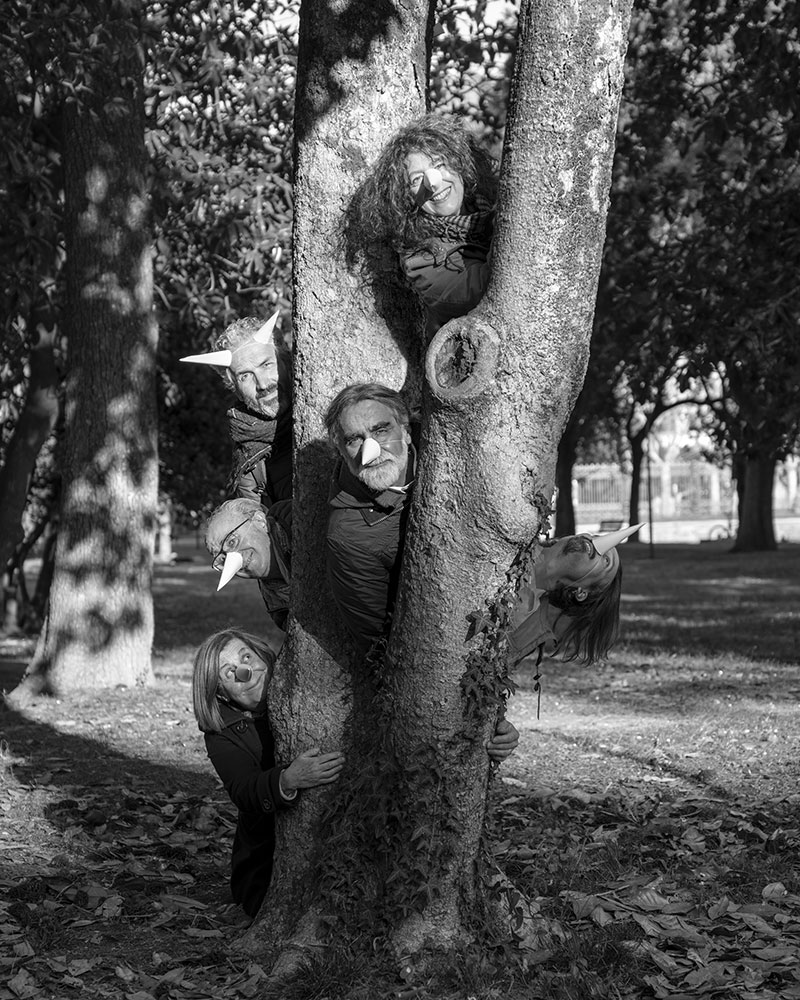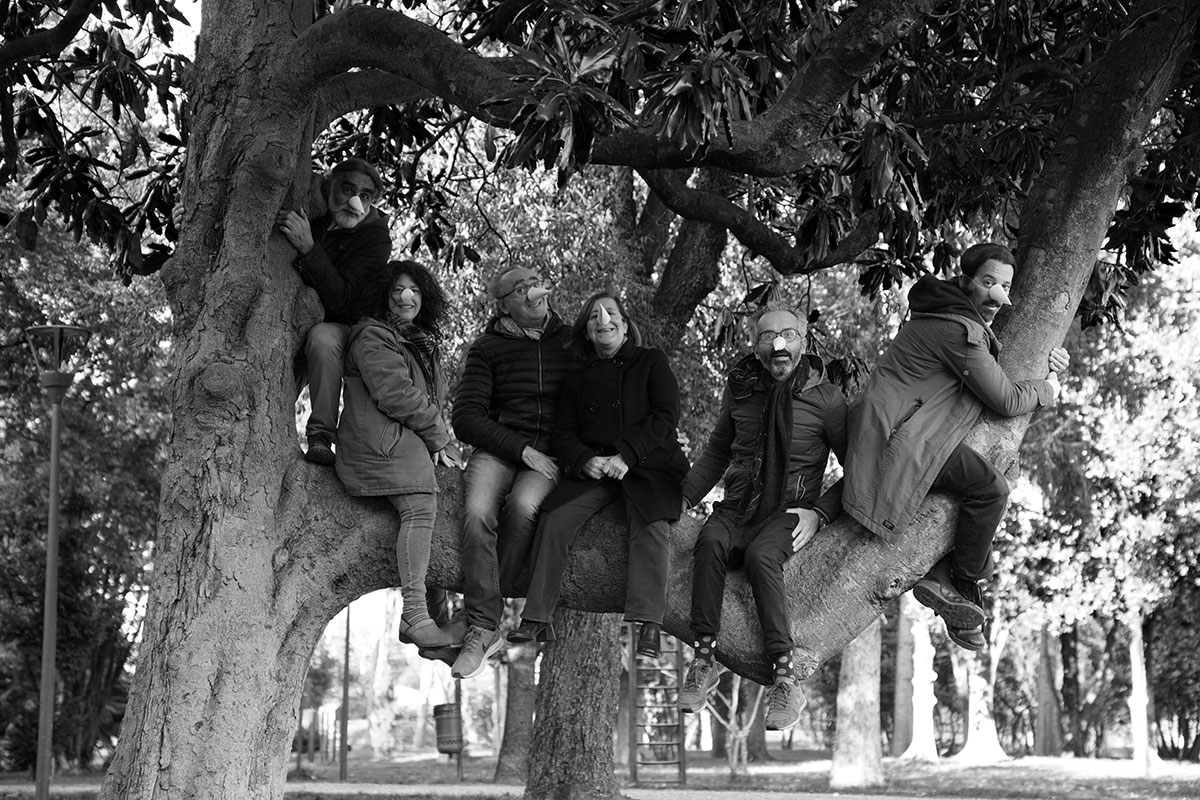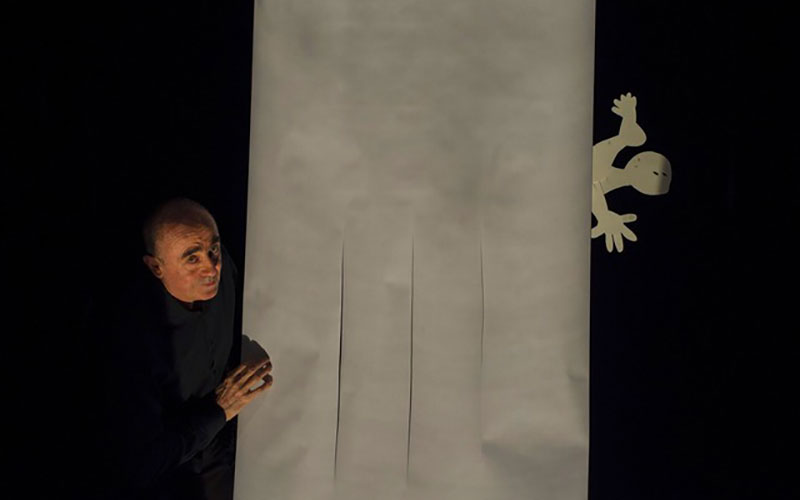Chi siamo
Compagnia Drammatico Vegetale
(Le avventure di Pinocchio. Storia di un burattino, Carlo Collodi, 1881)

Nel 1974 nasce la Compagnia Drammatico Vegetale, gruppo storico di teatro per ragazzi, che proprio nel suo nome rende omaggio al teatro di burattini e marionette della tradizione italiana. È da qui che nasce il percorso artistico di Drammatico vegetale. Dal teatro di burattini al teatro di animazione poi il passo è breve.
Così pure l’evoluzione verso un contemporaneo teatro di figura, in cui i personaggi sono il prodotto di un'interpretazione plastica non più artigianale, ma artistica. Nel senso che, gli interpreti-figure tendono a divenire pezzi unici, pensati come oggetti d'arte, immagini e sculture prima di tutto, il cui valore risiede nella loro materia e forma, nella novità della modalità costruttiva.
L'animazione quasi diventa un aspetto secondario, avendo il burattinaio abbandonato la baracca, divenendo sempre più un attore che interagisce con i propri personaggi-oggetti. In questo contesto si sviluppa la ricerca della Drammatico Vegetale, una delle compagnie più fedeli al concetto del teatro di figura, al suo rapporto col mondo dell'arte, alla ricerca costante nell'ambito del visivo.
Altro aspetto importante nell'opera della Drammatico Vegetale, è il particolare rapporto da sempre ricercato col suono e con la musica. Spesso i suoi spettacoli ontengono scritture musicali originali, frequentemente esecuzioni dal vivo, anche in forma di concerto e con orchestra.
La compagnia opera in ambito nazionale ed internazionale.
Fino ad oggi, ha prodotto oltre 70 spettacoli.
Ha realizzato anche varie installazioni e percorsi interattivi e tiene laboratori teorici e pratici, relativi alla propria attività.
Ha partecipato in varie occasioni ai più importanti festival internazionali di teatro di figura e per ragazzi in Europa, medio ed estremo oriente, nord e sud America, conseguendo prestigiosi premi.
Drammatico Vegetale e Teatro delle Albe fondano nel 1991 la cooperativa Ravenna Teatro, Centro di Produzione Teatrale.


Un’idea di arte e infanzia
Il nostro primo compito, come operatori artistici è quello di creare le opportunità, le occasioni per l’incontro tra arte e prima infanzia e contribuire, per quanto ci è possibile, alla conquista della centralità del ruolo del bambino nella società come soggetto attivo, come cittadino portatore diretto di diritti.
E ora parliamo del bambino.
Più è piccolo, più è aperto all’esperienza artistica. Bastano pochi accorgimenti tecnici, per avere di fronte a noi o con noi una platea molto disponibile a mettersi in gioco. Sembra tutto semplice, ma il difficile deve ancora venire.
Bisogna trovare un linguaggio comune, una sintonia col bambino per comunicare con lui. La naturale curiosità del bambino verso ciò che lo circonda e che deve ancora scoprire è il nostro cavallo di troia per entrare in contatto.
E poi? E poi, dalla curiosità, dalla voglia-ansia di scoprire, bisogna arrivare al momento magico dell’incanto. E allora il bambino incantato incanta: incanta l’attore, il musicista, il danzatore. Le distanze si annullano e l’arte si crea.
Un colore che sporca una carta, una mano che fruga nella sabbia, un pezzo di legno che cade per terra e poche parole.

Ravenna Teatro / Drammatico Vegetale è socia di Small Size e Assitej Italia.
Small Size è una rete internazionale fondata nel 2007 con lo scopo di promuovere le arti performative e di avvicinare il pubblico dei “piccolissimi” (da 0 a 6 anni) al teatro.

Assitej Italia collega il Teatro Ragazzi in tutto il mondo attraverso una rete di diffusione e scambio di idee, progetti, opportunità, esperienze.
Drammatico Vegetale
«It’s impossible to imagine all the hugging, neck squeezing, friendly pinching and head butting in sign of true and sincere brotherhood that Pinocchio received amid all that mess, from the actors and actresses of that dramatic and vegetable company».
(The adventures of Pinocchio. Story of a puppet, Carlo Collodi, 1881)
Drammatico Vegetale theatre company was born in 1974, as an historical group of theatre for young audiences, that, with its name, pays homage to the Italian tradition of puppet and marionette theatre. This is where the artistic journey of Drammatico Vegetale begins. From puppet theatre to animation theatre is a small step. Likewise, we evolved towards a contemporary way of doing theatre, where characters are the result of a plastic performance which is no longer simply artisanal, but artistic. This means that interpreters/figures tend to become unique pieces, conceived as works of art, especially with regard to images and sculptures, whose value resides in their matter and shape, in the novelty of their design. Animation almost becomes a secondary aspect, now that the puppeteer is no longer hiding behind the theatre, thus becoming an actor who interacts with his own characters and objects.
This is the context where we develop our research as Drammatico Vegetale, one of the companies who are most committed to the concept of puppetry as well as to its relationship with art in general and the constant research in the domain of visual arts. Another aspect in the work of Drammatico Vegetale is the special relationship they have always had with sound and music. Often their works include original musical compositions, frequently played live, in the form of concert and with an orchestra.
The company operates at both national and international level. So far, the company has produced more than 70 shows. They also created various installations and interactive journeys, and held theoretical and practical workshops about their activity. The company has taken part in the most important international festivals of puppetry for young audiences, in Europe, Middle and Far East, North and South America, and received prestigious awards.
An idea of art and childhood
Our task as artistic workers is to create the opportunities to bring art and young children together and to contribute, as far as possible, to promote the role of child as an active subject, as a citizen with his/her rights. And now let’s talk about children. The younger they are, the more open they become to the artistic experience. It takes a few clever expedients to have in front of us, or with us, an audience that is ready to get involved. It sounds very easy, but the hard part is yet to come. You have to find a common language, a harmony with the children in order to be able to communicate with them. Their natural curiosity towards what surrounds them and to what’s still unknown to them will be our Trojan horse to establish a connection. And then? And then, from the curiosity, the desire and eagerness to discover, we have to get to the magic moment of enchantment. In that moment, the enchanted child will enchant the others: the actor, the musician, the dancer. Distances disappear and art is created. A trace of colour on paper, a hand fumbling in the sand, a piece of wood falling to the floor and few words.
Pietro Fenati, Artistic director
translated by Andrea Fantini


